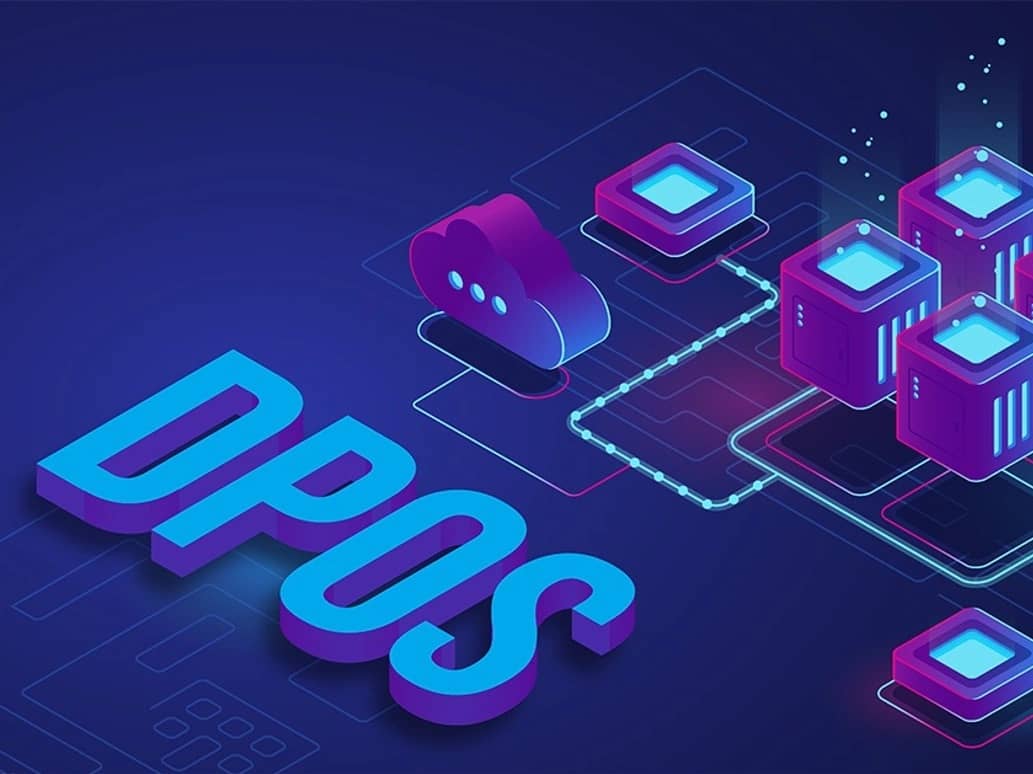Delegated Proof of Stake (DPoS)
Delegated Proof of Stake (DPoS) is a consensus mechanism that represents a modification of the traditional Proof of Stake (PoS) system. DPoS builds upon PoS by enabling network users to participate in the selection of delegates, who are responsible for validating blocks in the blockchain.[1]
Overview
Although Proof of Stake (PoS) and Proof of Work (PoW) are more widely utilized in blockchain technology currently, DPoS is specifically designed to address many of the limitations that impact both PoS and PoW.
Delegated Proof of Stake (DPoS) enables users to use their coins to cast votes for different delegates. Once these delegates are elected, they gain the authority to make decisions that impact the entire network. For example, elected delegates can establish protocol rules or validate transactions.[3]
The elected delegates are called block producers or witnesses. When delegated proof of stake is employed, it allows for voting on delegates by consolidating all of user's coins into a centralized staking pool, and subsequently associating these coins with a particular delegate. [3]
How DPoS Works
Voting
Voting plays a pivotal role in Delegated Proof of Stake. The protocol allocates voting authority to users depending on the quantity of the blockchain's native tokens they have staked. In certain instances, stakers have the option to delegate their voting authority to other users instead of directly participating in the selection of a validator node.[4]
Witnesses
Witnesses are node operators chosen to append new blocks of transactions to the blockchain. They must meet the necessary hardware specifications for block production and, notably, maintain a positive reputation to garner sufficient votes. After successfully adding new blocks of transactions, witnesses are rewarded, and they have the option to distribute these rewards among the stakers who voted for them. [4][5]
Transaction Time
The transaction time in DPoS is significantly shorter than that of PoS. This is primarily attributed to the fact that most DPoS blockchains operate with a compact network of witnesses, typically numbering between 20 and 100. Consequently, the verification of a block of transactions occurs more swiftly.[4]
Delegates
Delegates are central components of the governance of DPoS blockchains, as they suggest alterations that could potentially influence the direction of the blockchain network. These proposed modifications are subsequently subject to a voting process. This governance voting procedure is accessible to all network participants who have staked the native token of the network.[3][4]
History
Proof of Stake (PoS) was initially introduced in July 2011 during a Bitcointalk forum discussion, with the aim of developing a more efficient method for processing and verifying blocks. Subsequently, in 2013, Daniel Larimer conceived the Delegated Proof of Stake (DPoS) and implemented it in 2014 as an adapted version of the traditional Proof of Stake (PoS) consensus mechanism. The first instance of DPoS was put into use on BitShares in 2015.[1][2]
Advantages and Limitations of DPoS
Advantages
- Energy Efficiency: DPoS offers a significant advantage in terms of energy efficiency. Unlike PoW, which necessitates extensive computational work for transaction validation, DPoS relies on a limited number of delegates to carry out this task. This reduction in computational demands enhances the network's energy efficiency. [4][6]
- Speed: DPoS also boasts faster transaction processing compared to PoW. With only a small group of delegates responsible for block production, transactions can be validated and executed more swiftly.[6]
- Decentralization: DPoS is engineered to achieve a higher level of decentralization compared to PoW. Through the election of delegates by token holders, DPoS ensures that authority is distributed among a broad array of stakeholders, mitigating the concentration of power within a handful of influential mining pools. [6]
- Scalability: DPoS exhibits greater scalability than PoW. As a result of the limited number of delegates responsible for block production, the network can efficiently manage a higher transaction volume without compromising on speed or security.[6]
Limitations
Despite the significant advantages of stake-delegated proof blockchains, such as inclusivity and protection against double spending, they do exhibit a couple of limitations. Firstly, there is the potential for network centralization when only a limited number of users can function as witnesses. Additionally, there is the possibility of weighted voting, where users with smaller stakes in the currency may choose not to participate in the voting process.[3]
PoS vs. DPoS
PoS and DPoS differ primarily in how they handle block creation and governance.
Block Creation
1. Proof of Stake (PoS): In PoS, block creation and validation responsibilities are assigned to validators based on the number of cryptocurrency tokens they hold and are willing to "stake" as collateral. Validators take turns proposing and verifying blocks, and the chances of being chosen are directly proportional to the amount of tokens staked. This process is relatively random but favors those with larger stakes.
2. Delegated Proof of Stake (DPoS): DPoS introduces a more structured approach to block creation. Network participants vote to select a limited number of delegates, often referred to as "witnesses" or "block producers." These delegates are responsible for creating and validating blocks in a deterministic and rotational manner. This system aims to enhance network efficiency and speed by reducing the number of validators and allowing for quicker transaction processing. [4]
Governance
1. Proof of Stake (PoS): PoS systems typically involve minimal governance processes, with validators primarily focused on block validation. Major decisions, if any, are often made through informal consensus or community proposals. Governance in PoS is less formalized and more reliant on participants' incentives aligning with the network's best interests.
2. Delegated Proof of Stake (DPoS): DPoS incorporates a more structured governance model. Elected delegates have the authority to make critical decisions, such as protocol upgrades and transaction validations. This model often includes a predefined set of rules for proposing and voting on changes to the network, making it more organized and efficient in terms of decision-making. [4]
